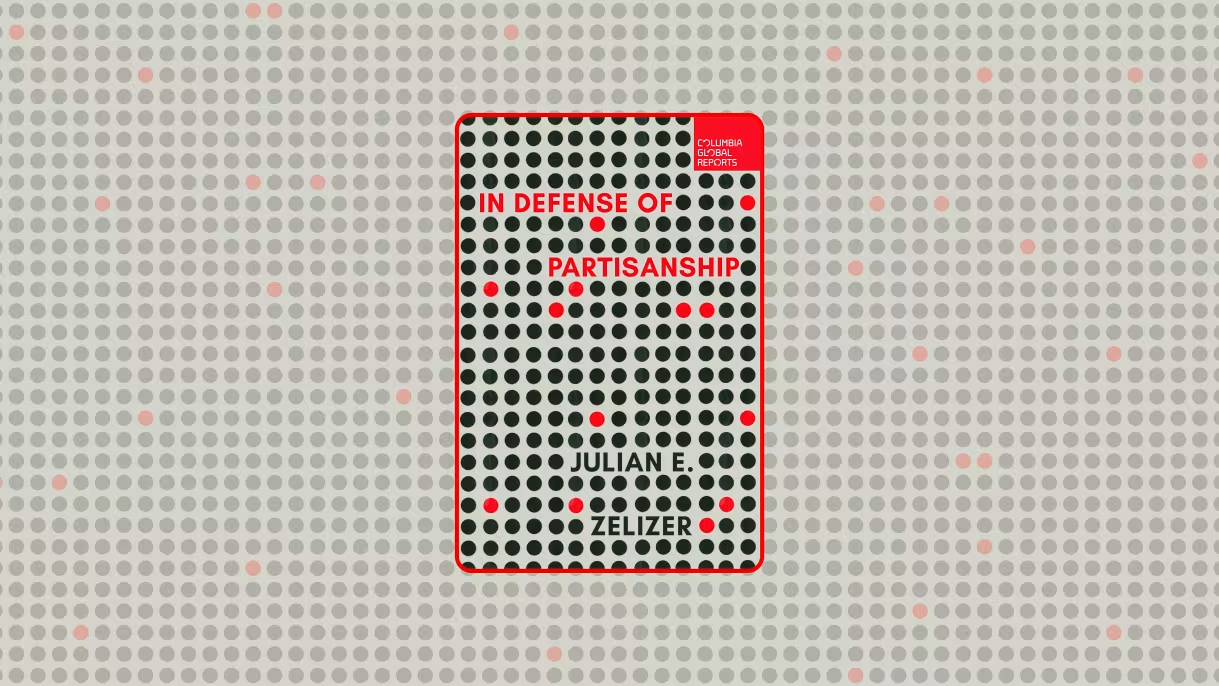

EXCERPT: Julian Zelizer Offers a Defense of Partisanship
Nearly 30 percent of Americans hold unfavorable views of both the Republican Party and the Democratic Party, according to the Pew Research Center, which notes that figure is “the highest share in three decades of polling.” A quarter of adults, Pew adds, “do not feel well-represented by either party.”
“Partisanship is a dirty word in American politics,” says Julian Zelizer, the Malcolm Stevenson Forbes, Class of 1941 Professor of History and Public Affairs at Princeton SPIA. “If there is one issue on which almost everyone in our divided country seems to agree, it’s the belief that the intense loyalty within the electorate toward Democrats and Republicans is the source of our democratic ills — division, dysfunction, distrust, and disinformation.”
But things weren’t always this way, he says. In the 1950s and 1960s, what Zelizer calls “responsible partisanship” laid the groundwork for “a sweeping set of congressional reforms in the 1970s and 1980s.”
In his new book, “In Defense of Partisanship” (Columbia Global Reports), Zelizer speculates on the future of partisanship. While many see partisan politics as an almost insurmountable obstacle to effective policymaking, he argues that the country has a strong legacy of party-based legislative progress. Similar party-based reforms going forward, he believes, could “create a more functional path” for Republicans and Democrats “to move forward and shape policy while still being able to govern.”
“I know that many of us are exhausted by the election we’ve just been through, and it’s hard to imagine a future where the things that divide us could actually help us to make progress,” Zelizer says. “But it is possible! In difficult times, partisanship can be central to progress. While today we bemoan our differences, history shows that strong parties have led to some of the biggest advances that we think as fundamental to our policy.”
Below is an excerpt from “In Defense of Partisanship.”
By the close of the twentieth century, partisan politics was ascendant in the electorate and in the organization of Congress. The reforms of the 1970s had built the organizational infrastructure for centralized parties to dominate the business of legislative politics. Demographic shifts produced electoral conditions where the incentives were in place for party leaders to use their new tools. As the political scientist Larry Bartels wrote in 2000, “Partisan loyalties in the American public have rebounded significantly since the mid-1970s, especially among those who actually turn out to vote.” The vast journalistic and social science literature from the 1970s and 1980s reiterating [Washington Post columnist] Broder’s message [lamenting the lack of partisan activity during the Vietnam War] that the parties were dead was turning out to be dead wrong. The vision of reformers from the 1950s and 1960s appeared to be coming to fruition.
To be sure, the style of partisanship that emerged was distinctively American, given that it was layered over the fragmented and decentralized constitutional system. It did not replicate parliamentary systems. There were inherent limits to how far a single party could govern with force and efficiency, given the separation of powers, bicameralism, and federalism. Unlike in parliamentary systems, party leaders in Congress, and even the dominant figures in states and localities, had limited sway over staggered candidate-centered elections. Primaries were the preferred method for nominating candidates, which undercut the hold of party leaders and staff, which in other countries have greater influence.
Moreover, as divided government became normative, moments of one-party rule were becoming limited at the national level. As James Sundquist argued, fellow political scientists who had been sympathetic to [former President Woodrow] Wilson’s position [in support of strong parties] had “paid little attention to how the government would and should function when the president and the Senate and House majorities were not all of the same party. They could in good conscience disregard that question because intervals of divided government in their experience had been infrequent and short-lived. . . . [Divided government] invalidates the entire theory of party government and Presidential leadership, both elements of it.” Although David Mayhew documented how divided government still had the capacity to produce a notable amount of legislation, subsequent research demonstrated that divided government nonetheless reduced the chances for presidential proposals to succeed, pushed many big issues off the agenda, and increased the number of presidential vetoes. Under united government, presidents received about three out of four votes on measures they supported. The percentage fell when power was divided. The number of bills passed that the public deemed to be vital, moreover, was almost always higher when one party controlled the White House and Congress.
Notwithstanding these limitations, partisanship, American style, was better, reformers felt, than the bipartisan morass of the previous decades. For most of them, the realities of the new Washington felt like a dream on its way to being fulfilled. The partisan era was underway.

